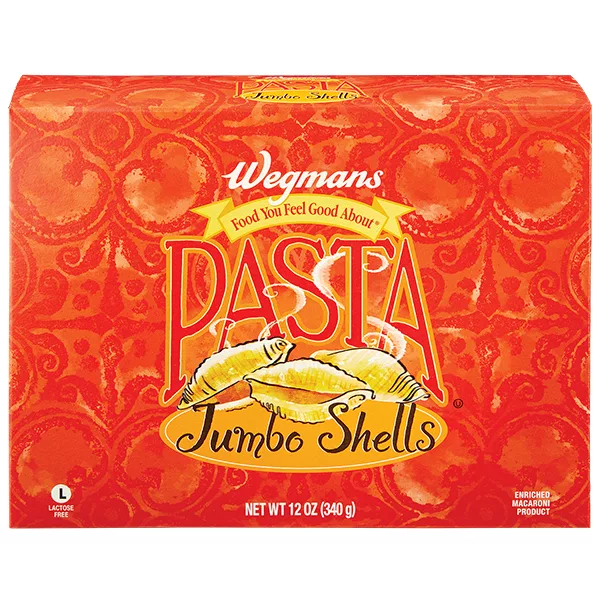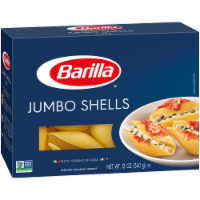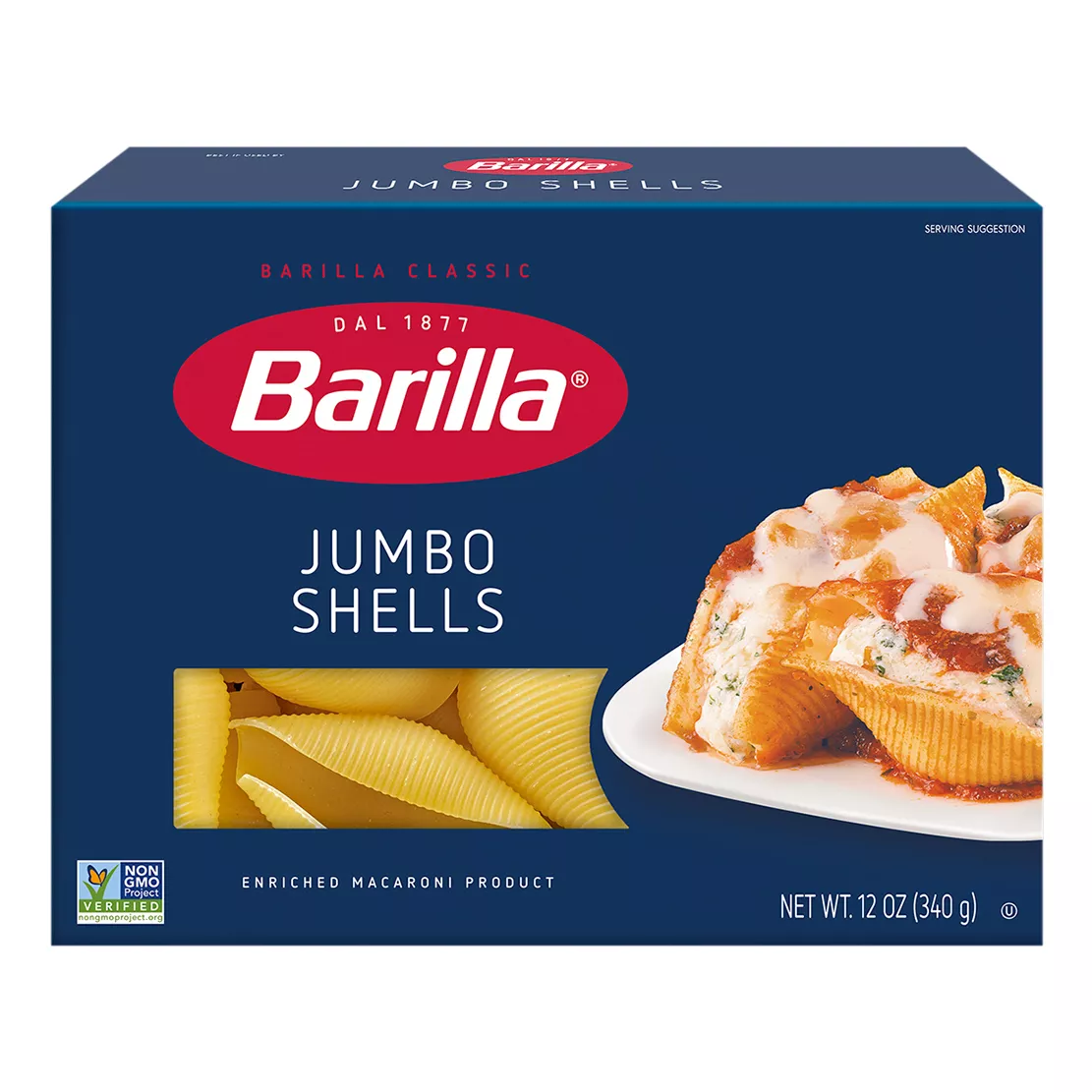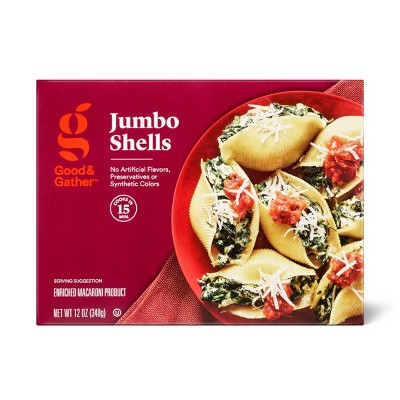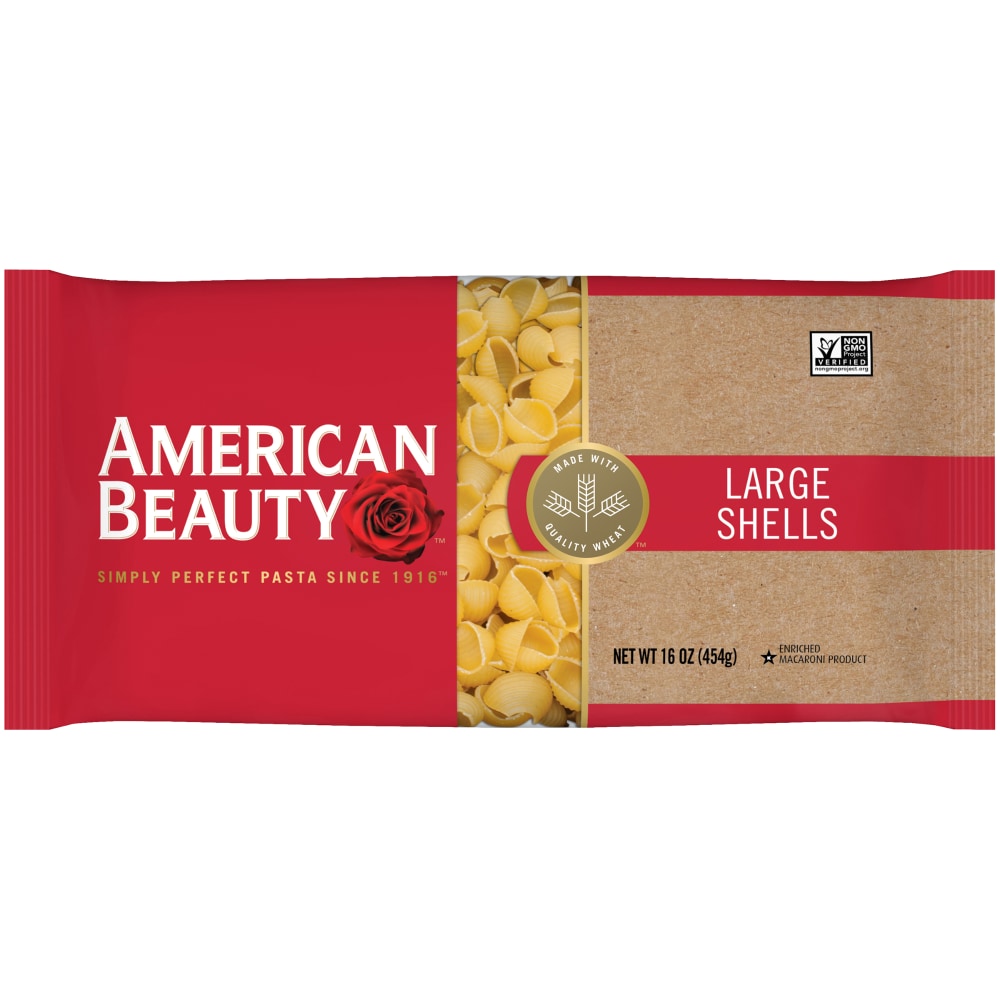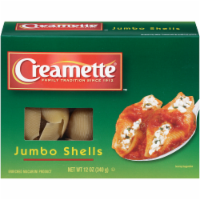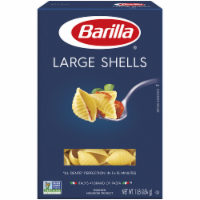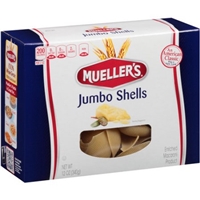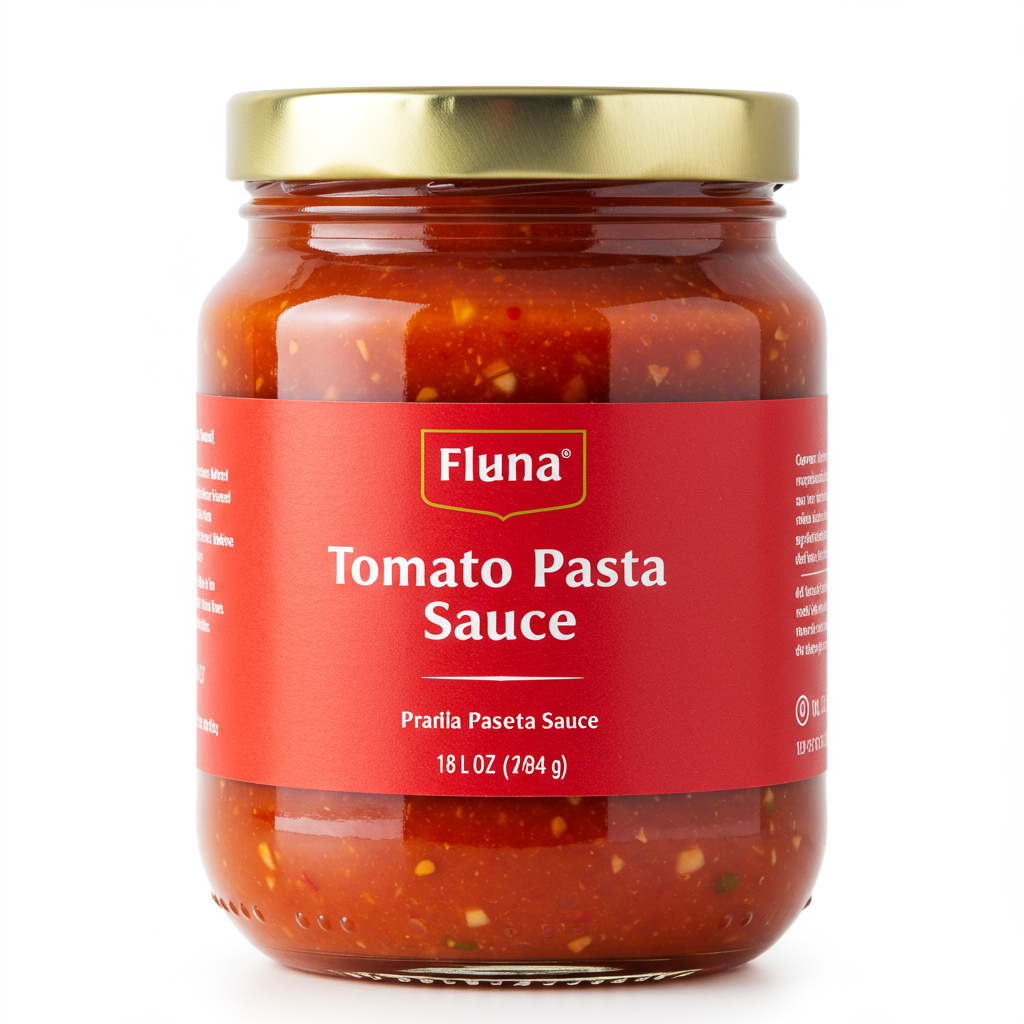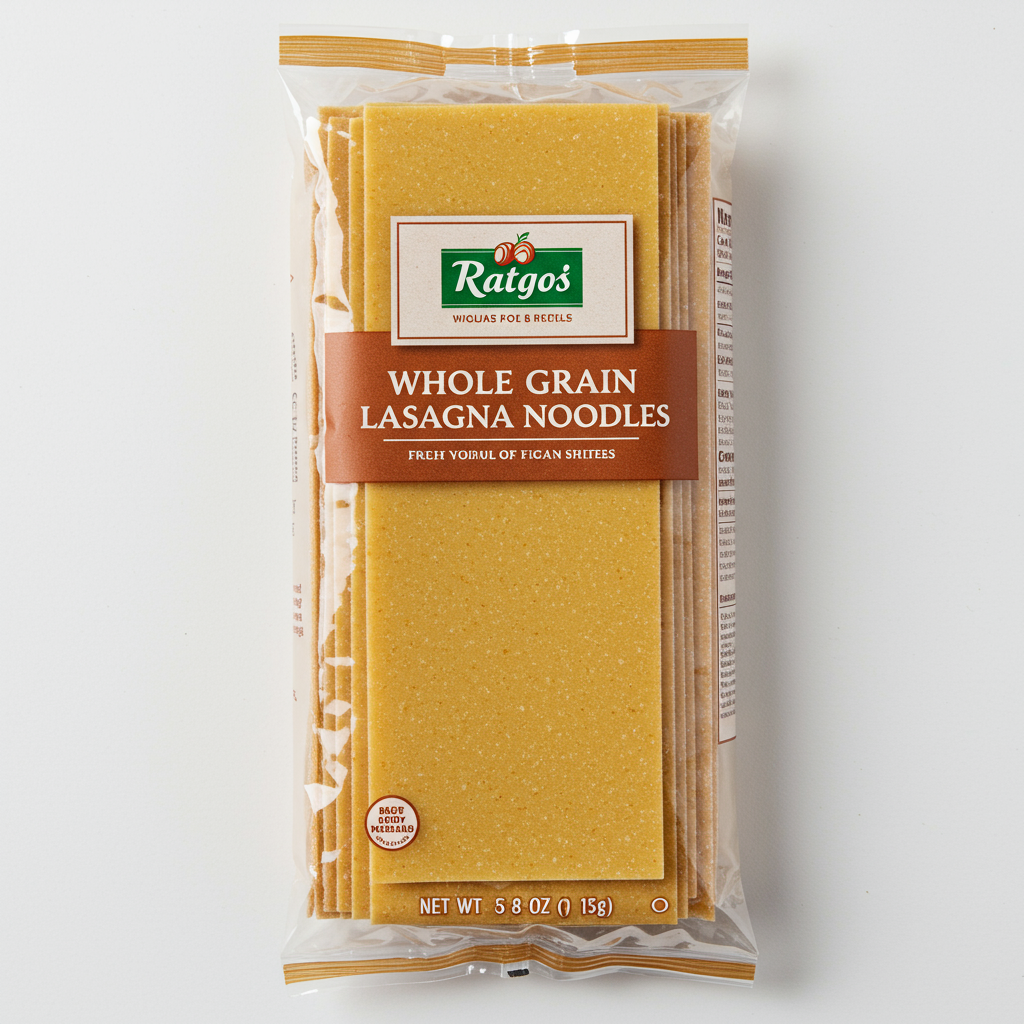MAIN DISHES
Jumbo Pasta Shells
Jumbo pasta shells, also known as conchiglie, are a type of Italian pasta that resemble large seashells. Made from wheat flour and water, these shell-shaped pasta pieces are popular for their ability to hold fillings, making them a versatile ingredient for various delicious dishes. Their hollow, concave structure makes them perfect for holding sauces as well.
In home cooking, jumbo pasta shells are often used for stuffed pasta dishes, such as stuffed shells with ricotta and spinach or ground beef, and baked in the oven with a tomato sauce and cheese topping. They can also be cooked al dente and mixed with chunky sauces or vegetables for a satisfying pasta salad.
85%
CARBS
2%
FAT
13%
PROTEIN
127 Jumbo Pasta Shells Products
Wegmans Food You Feel Good About Shells, Jumbo
Great Value Jumbo Shells
Barilla Jumbo Pasta Shells, Quality Non-GMO and Kosher Certified Pasta Shells
Barilla® Classic Blue Box Oven Pasta Jumbo Shells
Good & Gather Jumbo Shells
H-E-B Jumbo Shells
American Beauty Large Shells
Creamette Jumbo Shells
Barilla Large Pasta Shells, Quality Non-GMO and Kosher Certified Pasta Shells
Mueller's Jumbo Shells Pasta
Used In 27 Recipes
3
Cheesy Taco-Stuffed Jumbo Shells
3
Cheesy Chicken Alfredo and Bacon Stuffed Shells
4
Cheesy Garlic-Stuffed Shells
1
Triple Cheese and Basil Stuffed Pasta Shells
2
Creamy Cheese-Stuffed Jumbo Shells
2
Creamy Chicken and Cheese Stuffed Shells
1
Triple Cheese Burst Shells
2
Cheesy Spinach-Stuffed Jumbo Shells
Jumbo Pasta Shells Are Frequently Used With
Jumbo Pasta Shells FAQ
Jumbo pasta shells are a versatile pasta that can really shine if they are used to their full potential. Their unique shape makes them perfect for holding generous amounts of filling and they can be part of many delicious dishes. One area where people often go wrong is not cooking them correctly. It's important to boil the pasta until it's al dente, so it's still firm when bitten. If boiled too long, the shells can become mushy and lose their shape which isn't ideal for stuffing. After boiling, they should be rinsed with cold water to stop the cooking process.
Another tip is to not overstuff the shells. While it might be tempting to cram as much filling as possible, overstuffing can lead them to burst during the cooking process. On average, a teaspoon or two of filling per shell is an ideal amount.
One lesser known fact about jumbo pasta shells is that they can also be used in sweet dishes! For dessert, you can fill them with a sweet ricotta mixture, top with fruit and drizzle with honey for an Italian-inspired dessert.
Can I pre-cook and stuff my shells the day before?
How do you prevent pasta shells from breaking while boiling?
How can I make sure my stuffed shells don't end up soggy?
Why are my pasta shells sticking together?
Can jumbo pasta shells be used for soups?
How do I get my pasta shells to hold more filling?
Can you freeze stuffed pasta shells?
Can I use jumbo pasta shells in salads?
How do you keep stuffed shells from drying out?
How much filling should I put in a jumbo shell?
Expiration & Storage Tips
When does jumbo pasta shells expire?
Unopened boxes of jumbo pasta shells can generally last up to 1-2 years past the printed date on the package, thanks to their low moisture content which inhibits bacteria growth. Once a box has been opened, the pasta shells should be used within 1 year for best quality. While freezing is not a common storage method for dried pasta, it's possible to freeze cooked pasta shells. If you decide to go this route, cooked shells need to be cooled first, then stored in a freezer-safe bag or container. They can last up to 1-2 months in the freezer. To defrost, simply place the frozen shells in the refrigerator overnight.
How do you tell if jumbo pasta shells is bad?
If your jumbo pasta shells have gone bad, they may develop an off smell or change in color. Dried pasta is very hardy, but if it's been in your pantry for a long time, you might notice a stale or musty odor. Any sign of bugs or weevils is also a definitive sign that the pasta has gone bad and it should be thrown out immediately. When it comes to cooked pasta shells, signs of spoilage are similar to those in other cooked foods, such as a sour smell, slimy texture, or the presence of mold.
Tips for storing jumbo pasta shells to extend shelf life
• Keep dried pasta in a cool, dark place, like a pantry or cupboard.
• If the box has been opened, transfer any leftover pasta to an airtight container to prevent moisture and bugs from getting in.
• Don't rinse your pasta after cooking (unless you're making a cold pasta salad). The starch helps sauce stick to the pasta.
• If you've cooked more pasta shells than you can eat, cool them quickly under cold water, then dry and store in an airtight container in the fridge. They should be safe to eat within two days.
• For longer-term storage, cool your cooked pasta shells, then store them in airtight bags or containers in the freezer. Reheat by cooking in boiling water or warming in a sauce on the stove.
EXPIRES WITHIN
19 - 29
MONTHS
Substitutes
Health Info
Macros
43g
CARBS
1g
FAT
7g
PROTEIN
Allowed on these diets
LOW FAT
HIGH CALCIUM
VEGETARIAN
VEGAN
LACTOSE FREE
Contains these allergens
WHEAT

